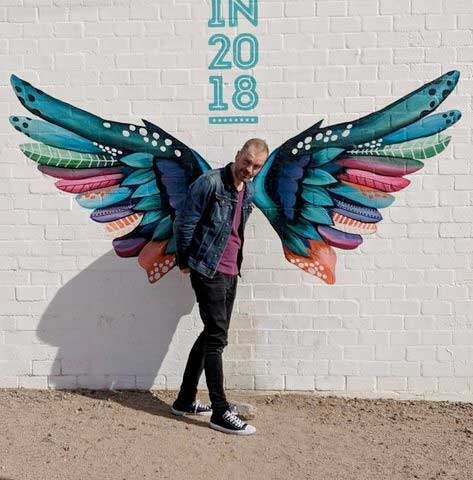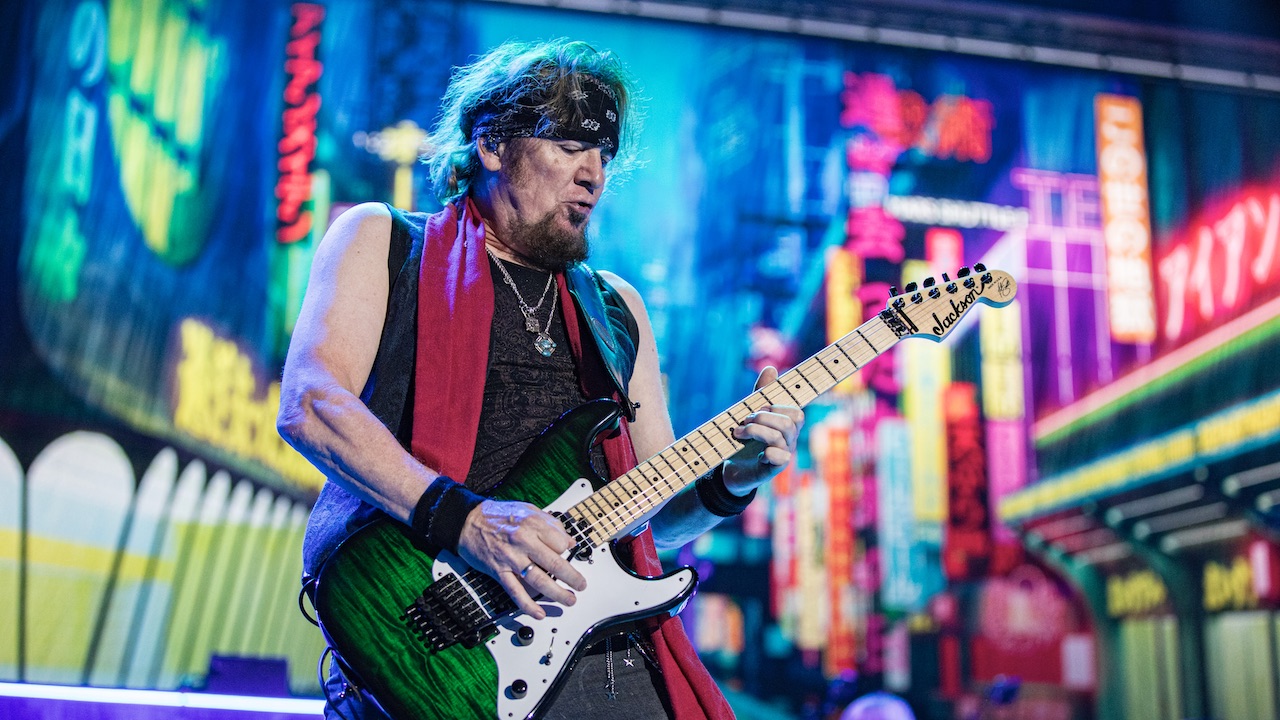"You had guys who would jump into the crowd and then walk across people’s heads." Inside the year that turned thrash metal into a global phenomenon
From Anthrax's Fistfull Of Metal to Exodus's Bonded By Blood and Metallica's Ride The Lightning, 1984 was the year thrash broke big
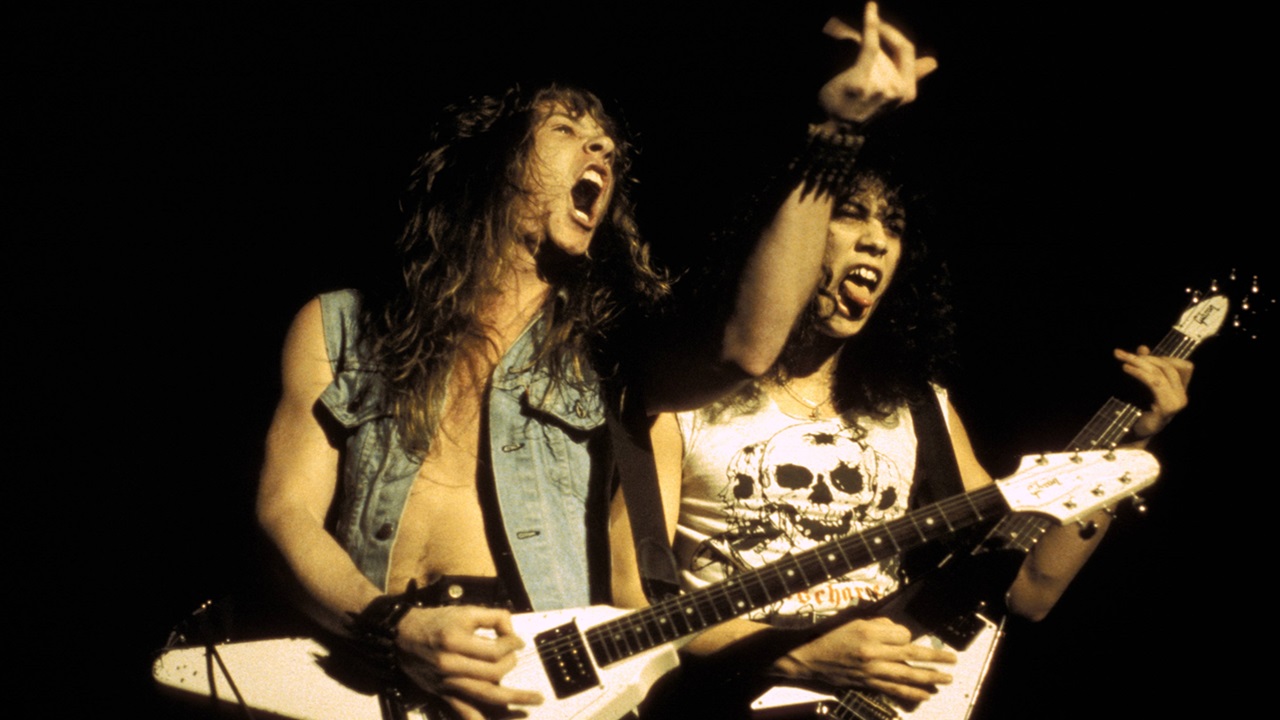
Like a bawling baby found on the steps of some godforsaken orphanage, it’s impossible to pinpoint the exact date of thrash metal’s birth. But the indisputable fact is that by 1983, this feral movement was starting to make its presence known on the underground metal scene.
That year, Metallica relocated from their native LA to San Francisco’s Bay Area and released debut album Kill ’Em All in July. Fellow Bay Area demons Exodus – who actually predated Metallica, and whose guitarist, Kirk Hammett, the latter had recently poached – were causing chaos in the clubs. Down the Pacific coast in LA, Dave Mustaine, the man whom Kirk replaced in Metallica, was getting Megadeth off the ground and plotting his revenge on his ex-bandmates, while Satanic stormtroopers Slayer released their debut album, Show No Mercy, at the end of the year. Over in New York, the nascent Anthrax got in on the action, releasing their debut single, Soldiers Of Metal.
If 1983 marked thrash’s infancy, then 1984 saw it accelerating through adolescence. It was 12 months of carnage and chaos in the clubs; of such landmark releases as Anthrax’s debut album Fistful Of Metal and Slayer’s Haunting The Chapel EP; of the rise of bands such as Dark Angel, Hirax, Megadeth and more. And towering above everything was Metallica’s Ride The Lightning, the album that would change the game for everyone.
In January 1984, Anthrax became the third of thrash’s future kings to release an album, with their debut Fistful Of Metal. Like Kill ’Em All six months earlier, it came out on Megaforce Records, the label owned by New Jersey businessman Jon Zazula – aka Jonny Z – and his wife Marsha. Together with Metal Blade owner Brian Slagel, who included Metallica on 1982’s Metal Massacre compilation and released Slayer’s Show No Mercy in December 1983, the Zazulas were instrumental in shaping the thrash scene.
Scott Ian (Anthrax guitarist): “Jonny was a big guy, he had the beard, he was very brash. And he didn’t give a fuck what anybody thought about him. That was what we needed back then.”
Maria Ferrero (Megaforce employee): “Jonny and Marsha were so important to what was happening. They were hysterical people - too much fun, but serious at the same time. No bullshit… well, some bullshit! Ha ha!”
Scott Ian: “We went up to Ithaca, New York, in the fall of ’83. We had two weeks to make Fistful Of Metal. The fact that we were recording an album in a professional studio… it was all just so unbelievable. We were following the paths of our heroes, of Motörhead and Iron Maiden.”
Sign up below to get the latest from Metal Hammer, plus exclusive special offers, direct to your inbox!
Maria Ferrero: “Anthrax were thirsty, thirsty, thirsty: ‘We want that.’ They didn’t even have to say it, that’s what it was.”
Gary Holt (Exodus guitarist): “Anthrax were still in the [original singer] Neil Turbin era - zebra-striped guitars and no shirts. They weren’t really in thrash territory then. Thrashy, but not really thrash.”
Scott Ian: “Fistful Of Metal came out in January of ’84 with little or no marketing behind it. There was no money to take out ads in magazines. It was word of mouth, Jonny banging on the doors of magazines, calling radio stations: ‘You need to listen to these guys.’”
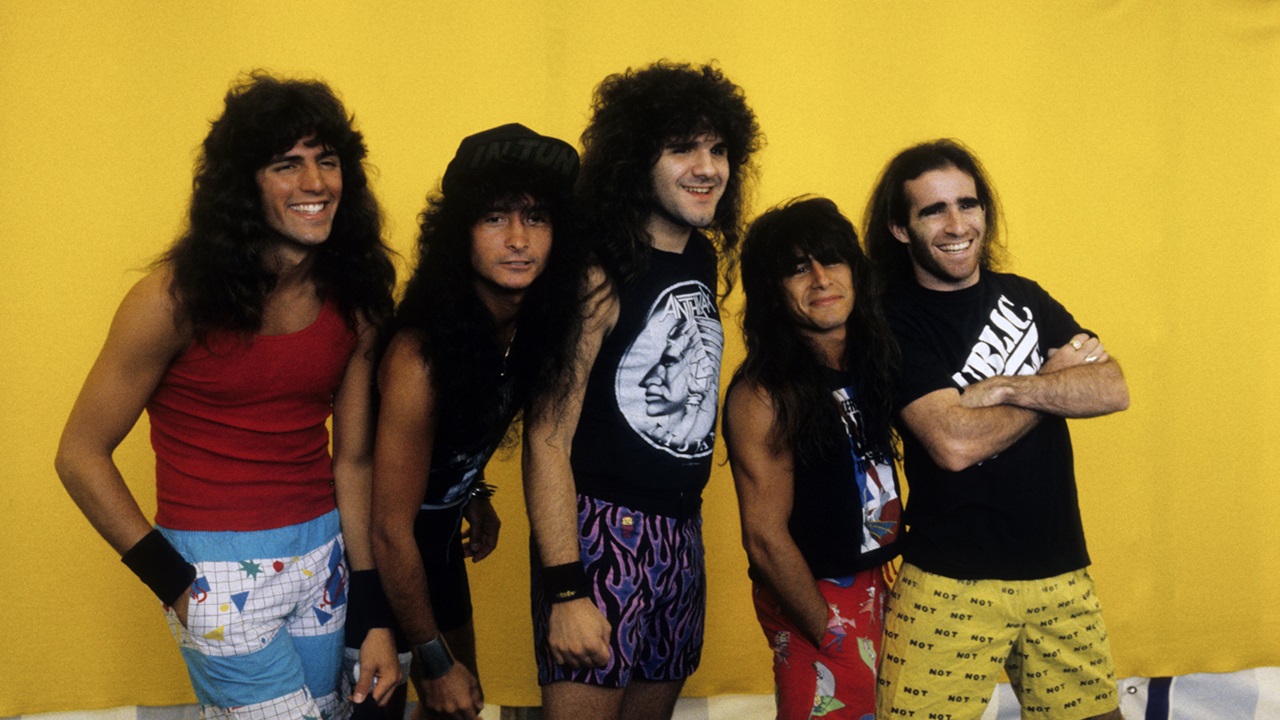
Spearheaded by Metallica and Exodus in the Bay Area, Slayer, Hirax, Dark Angel and Megadeth in Los Angeles, and Anthrax in New York, this burgeoning movement – christened ‘thrash metal’ by UK journalist Malcolm Dome in a review of Fistful Of Metal – was snowballing. A scene was taking shape.
Gary Holt: “Before 1984, there wasn’t a thrash scene, there was a metal scene. In ’84, there was a fucking thrash scene.”
Scott Ian: “We’d been hanging out with the Metallica guys for almost a year by that point. We’d played shows together in clubs in New York and New Jersey in 1983. We hadn’t met Slayer or Exodus yet, but it definitely felt like a scene.”
Gary Holt: “The first time we met Metallica was when we played together at the Old Waldorf in San Francisco [in November 1982]. It kind of felt like someone was holding a musical mirror up. We became friends immediately, and they moved up to the Bay Area [in early 1983], because LA sucked.”
Maria Ferrero: “Was there rivalry between the bands? Oh god, yes. Of course.”
Katon W. De Pena (Hirax frontman): “It was really competitive, and a lot of bands didn’t like each other back in the day. Slayer were pretty hard-ass – they didn’t even get along with Metallica.”
Brian Slagel (Metal Blade owner): “Metallica and Slayer were never very close. I was friends with both bands, and Metallica would ask me, ‘What are Slayer doing? What are they writing?’ And the Slayer guys would ask me, ‘What are Metallica doing?’ It was, ‘Who’s faster? Who’s heavier?’”
Lars Ulrich (Metallica): “We were competing, but not in a negative way. We wanted to be the best, we wanted to be the heaviest, the fastest. So our rivals were any band that’d open up for us – we’d be like, ‘Let’s blow ’em out the water!’ I can’t think of a single band we had a real negative relationship with.”
Dave Mustaine (Megadeth frontman): “It wasn’t enough for Megadeth to do well. I wanted Metallica to fail.”
Katon W. De Pena: “The competition made the scene stronger. The bands were trying to be better than each other and better themselves as musicians.” Gary Holt: “For Exodus, we didn’t give a shit about anybody else. We just wanted to play our shows and do our thing. We were just gonna drink it and snort it and fucking crush it no matter what. We were out of our minds.”
The emerging thrash scene had three key epicentres: Los Angeles, New York and, most importantly, the Bay Area. Clubs such as Brooklyn’s L’Amour, The Country Club in LA, and Berkeley sweatbox Ruthie’s Inn became the playground of the likes of Anthrax, Exodus and Slayer.
Gary Holt: “Ruthie’s was an old blues bar, but [owner] Wes Robinson, rest in peace, decided to book Exodus. We were the first metal band to play there. It was taken over in every possible way by bands like us and Metallica. Exodus became Ruthie’s unofficial house band.”
Katon W. De Pena: “'Ruthie’s was carnage. It was the wild, wild west. People would drink underage, but they got away with it. It would be packed out, really hot, really sweaty, everybody showing how metal they were by keeping on their denim and leather.”
Gary Holt: “We had our Slay Team - our entourage of fucking maniacs who provided stage security/entertainment. People like Toby Rage, who was a Bay Area legend. I have photos of that dude looking right at the camera, jumping off the top of the PA. All these unsuspecting people below him who were about to get a six-foot-four dude landing on them…”
Scott Ian: “We heard stories from the Metallica guys about how intense the crowds there were.”
Gary Holt: “Animal behaviour, people beating each other, PA-top stagedives. Often there were fights onstage, with one guy on one side of me and another guy on the other side, punches flying in front of me and behind me, and I’m bobbing and weaving, just keeping playing.”
Brian Slagel: “Slayer went up there the first time [in January 1984]. The reaction was really good – they fitted in with that whole scene up there, Exodus, Metallica, all that early thrash stuff.”
Gary Holt: “They played three nights [in San Francisco]. We played the second one with them. The first one was at the Keystone, Berkeley. After the [Keystone] show, we went to the hotel and told them there was no way they could wear that make-up at Ruthie’s, which is where they were playing the second night. It would not have gone down well. And then we destroyed their hotel. With their permission, of course.”
Scott Ian: “Our first time in the Bay Area, we played the Kabuki Theatre [on July 7, 1984], supporting Raven, with Exodus opening. Did it feel like we were in enemy territory? Never. We were just super-excited to be there.”
Gary Holt: “We’d sold that place out as headliners. We were like, ‘Fuck, sure, we’ll play anywhere.’ But our Slay Team did not appreciate the fact that Anthrax were playing after us. We had to call them off. We were, like, ‘Nah, these dudes are fucking cool, they’re our new friends, they’re on our protected list.’ It could have been ugly.”
Scott Ian: “Exodus are playing, and I’m watching this with my fucking jaw on the floor. There were dudes who were head-walking. I was used to slam-dancing and stagediving, but you had guys who would jump into the crowd and then walk across people’s heads as long as they could keep their balance, then fall to the ground. I’m thinking, ‘Holy shit, we have to follow this?’ Exodus should have been headlining. Bow to the kings.”
Katon W. De Pena: “Don’t get me wrong, I love the Bay Area. I have nothing but mad respect for it. But LA was really going on.”
Gary Holt: “To us, LA was just this land of Hollywood and posers. And Slayer.”
Katon W. De Pena: “Think about it: three of the Big 4 started in LA – Metallica, Slayer, Megadeth, then you got bands like Hirax and Dark Angel. I love my Bay Area brothers, but they gotta be honest - LA had a lot to do with it. It’s like Heaven and Hell - you can’t have one without the other. You gotta have both.”
Scott Ian: “All the thrash stuff in LA would happen at the Country Club in Reseda. We played two nights there with Raven [in July 1984] and the crowd was fucking rabid. One of the nights, Stryper opened the show. We had no idea they were Christian metal until they started throwing Bibles out into the crowd. Our fans just started throwing these Bibles back at Stryper 10 times as hard.”
Maria Ferrero: “The West Coast was a little more concerned with their hair than the East Coast. The East Coast was just, ‘Let’s tear it up!’ It was partly down to the punk influence, the hardcore matinees at [punk dive] CBGBs.”
Scott Ian: “You could say that the Bay Area got more attention, and we were overlooked in New York. But come on, name the major bands who came from the West Coast, not just the Bay Area, but the whole region. You had Metallica leading the way, with Megadeth, Slayer, Testament, Exodus… And New York? There was Anthrax, Overkill and… well, not to be unfair, was there anyone else? I’d say not.”
Gary Holt: “Yeah, there were those other places, but the Bay Area was where it was happening.”
By mid-1984, the thrash scene was really starting to cook. Metallica had already toured Europe in the spring, including a two-night stand at London’s hallowed Marquee Club. Back home, running mates Slayer released the Haunting The Chapel EP in June 1984, showcasing a faster and more vicious sound, while Exodus were recording their debut album, originally titled A Lesson In Violence, but eventually renamed Bonded By Blood.
Scott Ian: “By the summer of 1984, Metallica were off doing their own thing. Exodus were the kings of the Bay Area.”
Gary Holt: “Exodus were fucking wild, but we were serious when it was time to record the first album. We recorded in Prairie Sun Studio in Northern California. It was this ranch and they had cabins, so the Slay Team would come up in the evenings. We’d record in the day and fucking partied at night. Some of our friends would get too drunk and get in fights, shit would get broke. The owner later told us we caused a level of destruction that had to be admired.”
Brian Slagel: “Slayer had these new songs that sounded amazing. They didn’t have enough time to put a full record together, and budgets were challenging at that point, so I was like, ‘We can go in and record them, and you can put them out as a three-track EP [Haunting The Chapel].’”
Gary Holt: “Our album was everywhere a year before it ever came out [the album was delayed until spring 1985 due to issues with Exodus’s label, Torrid]. This was years before digital downloads, so people were listening to third-or fourth-generation cassettes dubbed on some guy’s boombox. It was frustrating, but I guess it built the myth.”
Katon W. De Pena: “The tape-trading thing was fever pitch, it was the internet of the time. That’s how you got your stuff around. Mailing your cassette tapes in regular, letter-sized envelopes. We’d send out 50 cassettes a week, no problem.”
Gary Holt: “I’ve never been a collector. People would send me a list and they had this shit categorised: every show, with a date, rating, quality. Nah, that’s not me.”
Katon W. De Pena: “I got tapes from Chuck Schuldiner in Florida, back when Death were called Mantas. I got Hellhammer tapes from Tom G Warrior, I remember getting the advance tape for the first Bathory record. We were all trading with each other, helping each other out.”
Gary Holt: “I got a call one day from this kid in Brazil named Max Cavalera. He’d gotten our tape with my mom’s address and phone number on the back. He barely spoke any English at the time, but he wanted to call and talk to me. This was a million years before we ever met.”
Katon W. De Pena: “It really felt like something was happening. We just didn’t know how big it was going to be.”
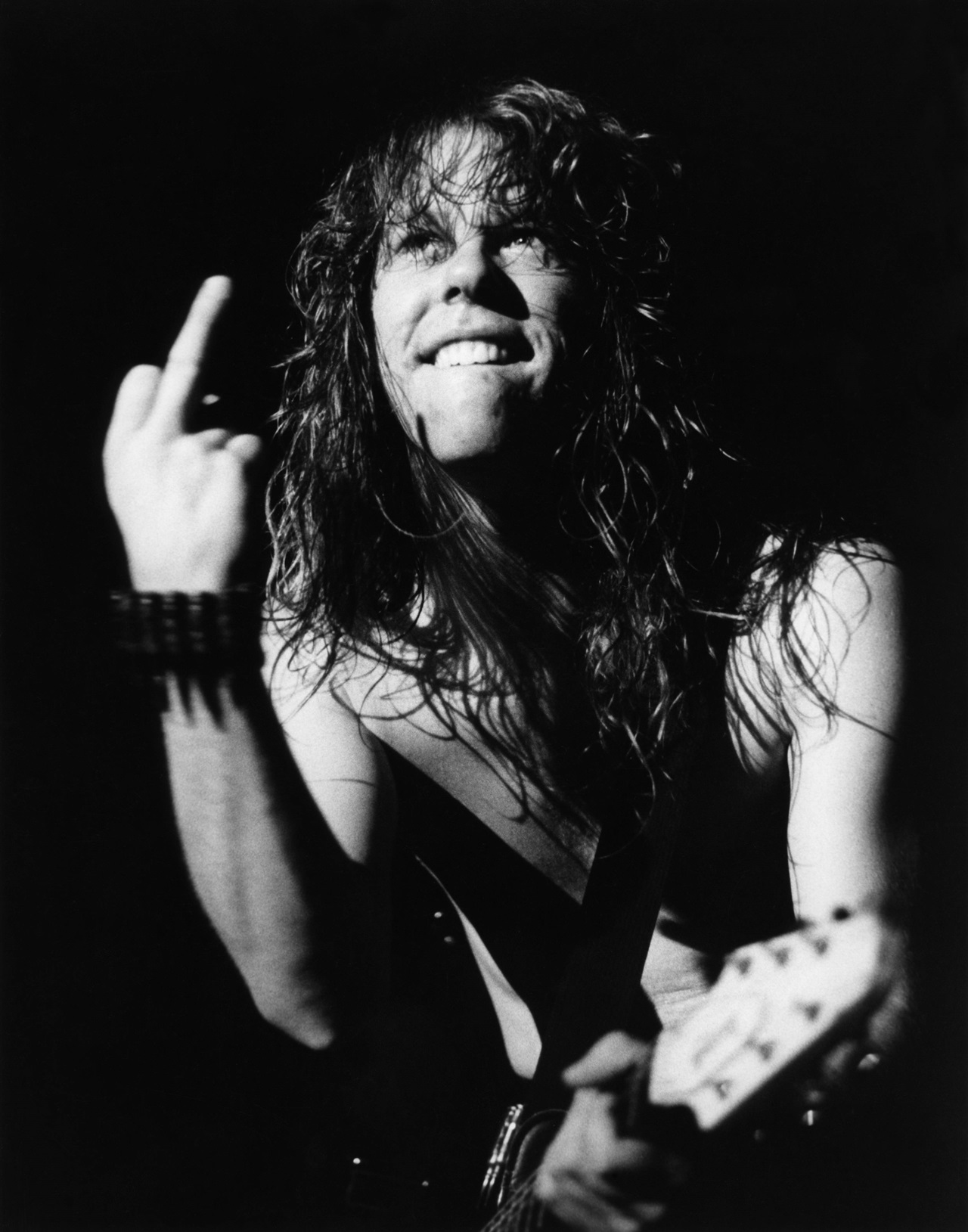
While the rest of thrash’s young bucks were establishing themselves, Metallica were already pulling ahead. In February 1984, they flew to Lars Ulrich’s native Denmark to record their second album, Ride The Lightning, with producer Flemming Rasmussen in Sweet Silence Studios, on the outskirts of Copenhagen.
Released on July 27, 1984, Ride The Lightning was a huge step on from Kill ’Em All, and an evolutionary leap forward for thrash. It refined its predecessor’s heads-down noise, but featured an acoustic guitar intro to opening song Fight Fire With Fire, and even included a thrash metal power ballad in the shape of the bleak Fade To Black, written by a disconsolate James Hetfield after some of the band’s gear was stolen from outside a gig in Boston, Massachusetts.
Maria Ferrero: “We’d heard a lot of those songs before they recorded the album. They’d stay in our area for months at a time, rehearsing in people’s basements, and they’d play stuff for us. It sounded great.”
Katon W. De Pena: “Everybody was waiting to see what they were gonna do, where they were gonna go. There were a lot of great bands, but Metallica were leading this whole thing.”
Flemming Rasmussen (producer): “Lars called me and asked if I wanted to record Ride The Lightning. I had never heard of them, and I didn’t know Kill ’Em All existed.”
Lars Ulrich: “We were really broke. We had to live day by day. A friend literally gave us his apartment to stay in while we were recording. James and I slept in the bedroom, Kirk and Cliff shared his couch.”
Flemming Rasmussen: “I really loved their energy and passion and ambition. They had a totally different attitude to the Danish bands that I had worked with, and were really enthusiastic about picking my brain and learning new things. We sparked up a great friendship immediately.”
Lars Ulrich: “Obviously, listening to songs like Fight Fire [With Fire] and Trapped Under Ice, we were obviously still into the thrash type of stuff. But we were realising you had to be careful that it didn’t become too limiting or one-dimensional.”
Scott Ian: “Cliff [Burton, Metallica bassist] was the one who really taught them about melody. Cliff was the maestro. He was really accomplished and was thinking beyond thrash and metal.”
James Hetfield: “If we’d been told when we were recording Kill ’Em All that we were gonna record a ballad [Fade To Black] on the next record, I’d have said, ‘Fuck off!’”
Flemming Rasmussen: “When we listened back to what we had done, they were blown away, and were so proud. I had never heard that kind of power come through the studio speakers.”
Maria Ferrero: “There was such anticipation. But they really took us by surprise with what they delivered. We all expected Kill ’Em All Pt 2. Instead, we had Kirk Hammett’s writing, his musicality.”
Gary Holt: “I loved it. Everybody loved it. Come on, it starts with Fight Fire With Fire. How do you not love that? Ride The Lightning’s one of my favourite songs of theirs. Trapped Under Ice… It’s killer.”
Lars Ulrich: “There was an odd reaction to Fade To Black and to the variety of the record. It did surprise us a little bit, I guess. People started calling us sell-outs and all that type of stuff.”
Katon W. De Pena: “I thought it was great. I still think it’s great! The thing about the thrash metal scene was it was always us against the world. Some of the hardcore thrash metal people were getting mad that people who weren’t, quote-unquote, ‘hardcore’ were getting into it. There was a little bit of pushback.”
Maria Ferrero: “Jonny and Marsha put out 70,000 copies of that record. It just flew. They made some money out of it, and they fucking should have, because they really put the work into that band and that album to get them to that level.”
Ride The Lightning didn’t trouble the album charts on either side of the Atlantic at the time, but Metallica’s ambitions were clear. The band signed with hotshot management company Q Prime and major labels were sniffing around them. A week after Ride The Lightning’s release, Metallica left Megaforce to sign with Elektra Records, who immediately reissued the album.
Lars Ulrich [speaking in 1984]: “[Q Prime co-founder] Cliff Burnstein has this big belief that what we are doing will be the next big thing in heavy metal… Metallica could be the frontrunners of a new branch of heavy metal.”
Michael Alago [Elektra Records A&R man]: “I got to see them at L’Amour in Brooklyn in 1983 with my friend [future Monster Magnet guitarist] Phil Caivano. Their insane, kickass performance completely blew me away.”
Maria Ferrero: “We had a concert at [New York venue] the Roseland Ballroom [on August 3, 1984] that had Metallica, Anthrax and Raven. The night was legendary.”
Scott Ian: “I still remember walking onstage, we opened with Deathrider and 3,500 kids had their fists in the air – every single one. We’ve never seen anything like it before. Not even a year before that, you had us and Metallica playing shithole dive bars in New Jersey to 100 people.”
Michael Alago: “I knew there were other A&R people there. So basically I bolted the door shut, and wound up being the only one backstage early in the evening. I said: ‘Look, I’m freaking out. I love you guys and you have to come to my office tomorrow.’ I had them come to the Elektra conference room where we had Chinese food and beer. I also gave them a bunch of vinyl and cassettes, specifically the MC5, The Doors and The Stooges. It was a very exciting and joyous time.”
Maria Ferrero: “The night of that Roseland gig, Metallica signed to Elektra, Anthrax signed to Island and Raven signed to Atlantic. We had arrived. Everybody had arrived.”
Scott Ian: “It was literally the point of this new wave coming in, and that night at Roseland, certainly for us and Metallica, that wave broke.”
Katon W. De Pena: “It opened the floodgates. It was like grunge before grunge.”
Lars Ulrich’s statement that his band “could be the frontrunners of a new branch of heavy metal” proved to be accurate. Other bands were following the path cleared by Metallica, Slayer, Exodus, Anthrax et al: the likes of the Bay Area’s Possessed, Death Angel and Legacy (later to change their name to Testament); New Jersey’s Overkill; Voivod from Canada.
By 1985, Exodus, Megadeth, Hirax and Dark Angel had dropped their debut albums, while Slayer and Anthrax delivered classic followups with Hell Awaits and Spreading The Disease respectively. It would take a couple more years for the thrash scene to bubble into to the mainstream, but this groundswell of snarling, drunken malcontents had to be taken seriously.
Gary Holt: “’83, ’84, ’85 were all pivotal. We were learning, we were growing, we were creating this thing.”
Maria Ferrero: “We were all kids. None of us thought, ‘This is what we’re gonna do for a job.’ This is what we’re doing instead of working.”
Gary Holt: “Did I think, ‘We’re changing the world here?’ No. I just knew I was having a good time. I know a fucking good time when I see it, and we were having it.”
Scott Ian: “Did it feel like a changing of the guard? No. Even Metallica – and in 1984, they were ahead of everybody else – it still wasn’t Maiden or Judas Priest or Ozzy. But we were confident and strong and we thought the whole world had to hear it. Give us a stage where this bull can rage!”
Gary Holt: “What other music scenes rivalled it? The Tampa death metal scene? The black metal scene? The New England melodic hardcore scene? They wouldn’t have existed without thrash. Fuck no.”
Katon W. De Pena: “1984 was the most important year. That was the year it really started to explode. ’84 was the spark that set off the whole thing. By 1985, it was on fire.”
Dave Everley has been writing about and occasionally humming along to music since the early 90s. During that time, he has been Deputy Editor on Kerrang! and Classic Rock, Associate Editor on Q magazine and staff writer/tea boy on Raw, not necessarily in that order. He has written for Metal Hammer, Louder, Prog, the Observer, Select, Mojo, the Evening Standard and the totally legendary Ultrakill. He is still waiting for Billy Gibbons to send him a bottle of hot sauce he was promised several years ago.
